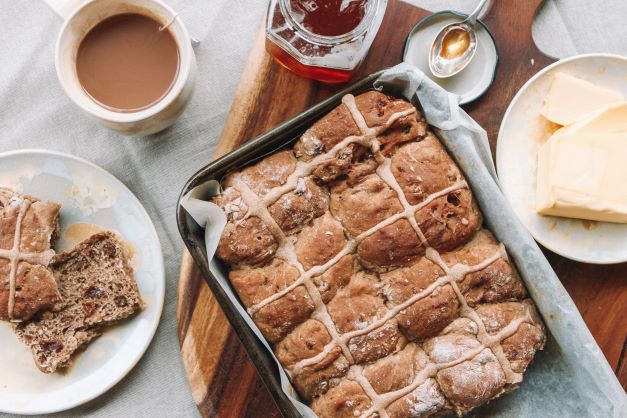Like Christmas, Easter can be a time when we buy too much food all at once
If you’re hosting a family gathering this weekend or want to have the fridge fully stocked while the kids are home from school, it’s understandable that you may encounter some food waste by the end of the holiday.
However, if you find yourself with more food than you need, don’t throw it out. Here are a few tips from Too Good To Go to make sure you’re getting the most out of your groceries:
1. Plan ahead so you only buy what you need
Meal planning might sound like a pain but even a brief outline of what you’re going to make over the Easter holidays will save you money on your groceries bill. Write a shopping list and then stick to it when you’re in the supermarket – try not to be sucked in by impulse buying or special deals. Try to find recipes that overlap slightly as well. For example, planning multiple meals that utilise the same, or parts of the same, products means that you’re not buying a new set of ingredients for every meal.
2. Don’t discount fruit and veg based on how it looks
Just like books, you should never judge food by its appearance! Oddly-shaped or bruised fruits and vegetables are often thrown away because they don’t look ‘perfect’ but in reality, they taste exactly the same. Even those more mature vegetables are perfect for roasting for the Easter Sunday dinner.
3. Take care of how you store your food
Did you know that storing chocolate in the fridge can wreak havoc on the taste and texture of your chocolate? Not only can the chocolate absorb the smells of food around it but storing in the fridge can also increase humidity. It’s recommended keeping your Easter chocolate in a cool, dark place such as a kitchen cupboard and preferably in an airtight container to keep any unwanted flavours at bay.
4. Check your fridge temperature
Be honest, how many times have you checked your fridge temperature in the last year? You’re not alone. However, keeping your fridge at the correct temperature is also key for keeping your food fresh. Setting it at below 5°C is ideal for extending the life of perishable foods like milk or yoghurts.
5. Know the difference between ‘best before’ and ‘use by’ dates
This is a big one. There’s a big difference between ‘best before’ and ‘use-by’ dates. Often food is still safe to eat after the ‘best before’ date, whereas it’s the ‘use-by’ date that indicates when it’s no longer safe to eat. Before throwing out food that’s past its ‘best before’ date, make sure you use your senses to look, smell and taste whether it’s actually gone off. You’d be surprised how many food items are perfectly good to eat way beyond this date.
6. Take care with your portion sizes
Research carried out by Too Good To Go found that 23% of us throw away food at home because there is too much left on our plates for one meal but not enough to save for the next day. To counteract this, try to find your own hacks for measuring food so that your portion sizes work for you. For example, a standard builder’s mug of rice is usually enough to serve four adults when cooked.
7. Get creative with your Easter leftovers
Nowadays, many of us are in the habit of wanting to eat something new every day, but don’t be afraid to get creative with your Easter leftovers. For example, you can use any lamb roast dinner leftovers in a lamb curry, leftover hot cross buns for a bread and butter pudding and any unwanted chocolate (if such a thing exists) could be used for baking delicious chocolate brownies.
If you’re looking for Easter treat inspiration, click here








